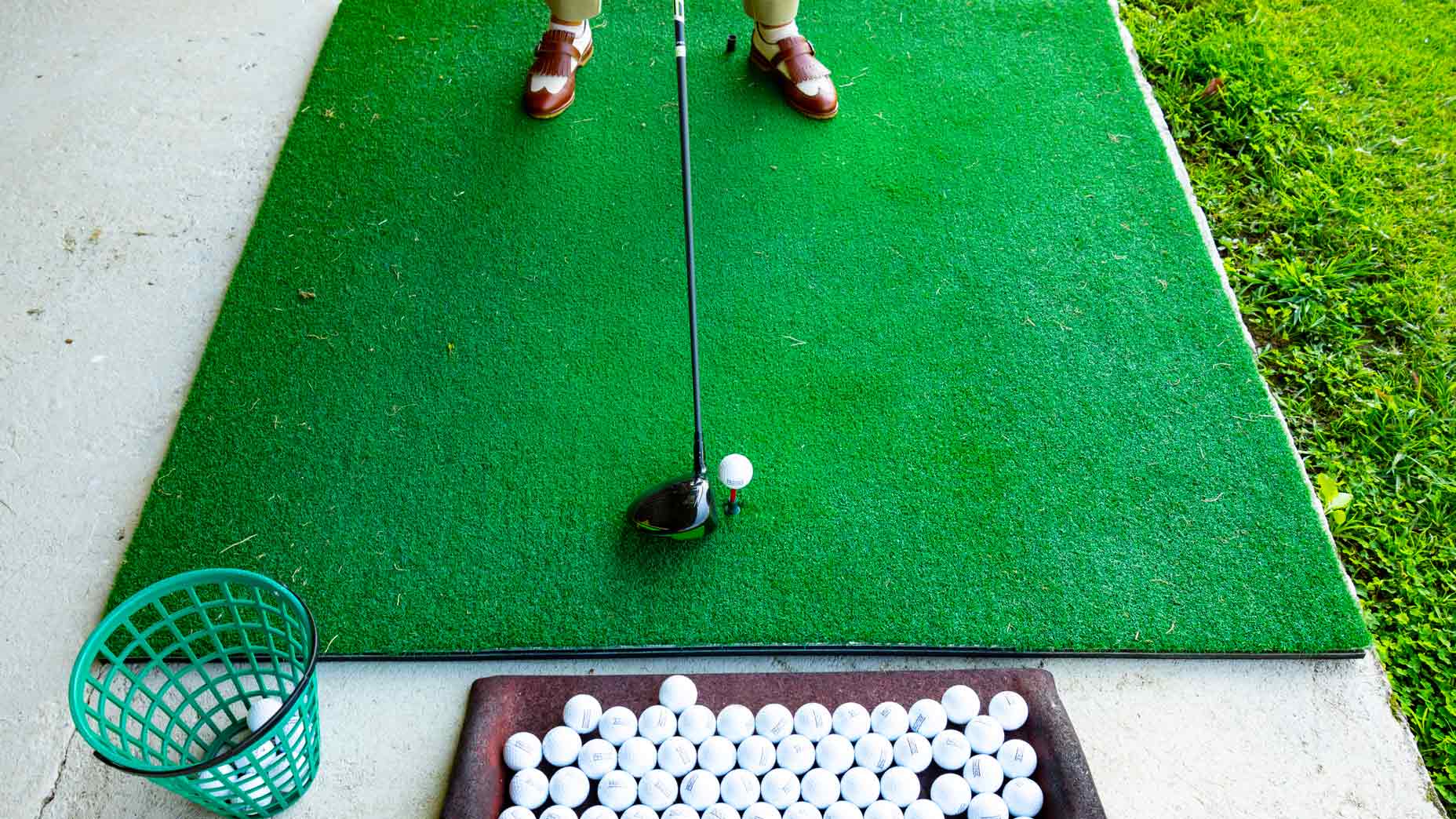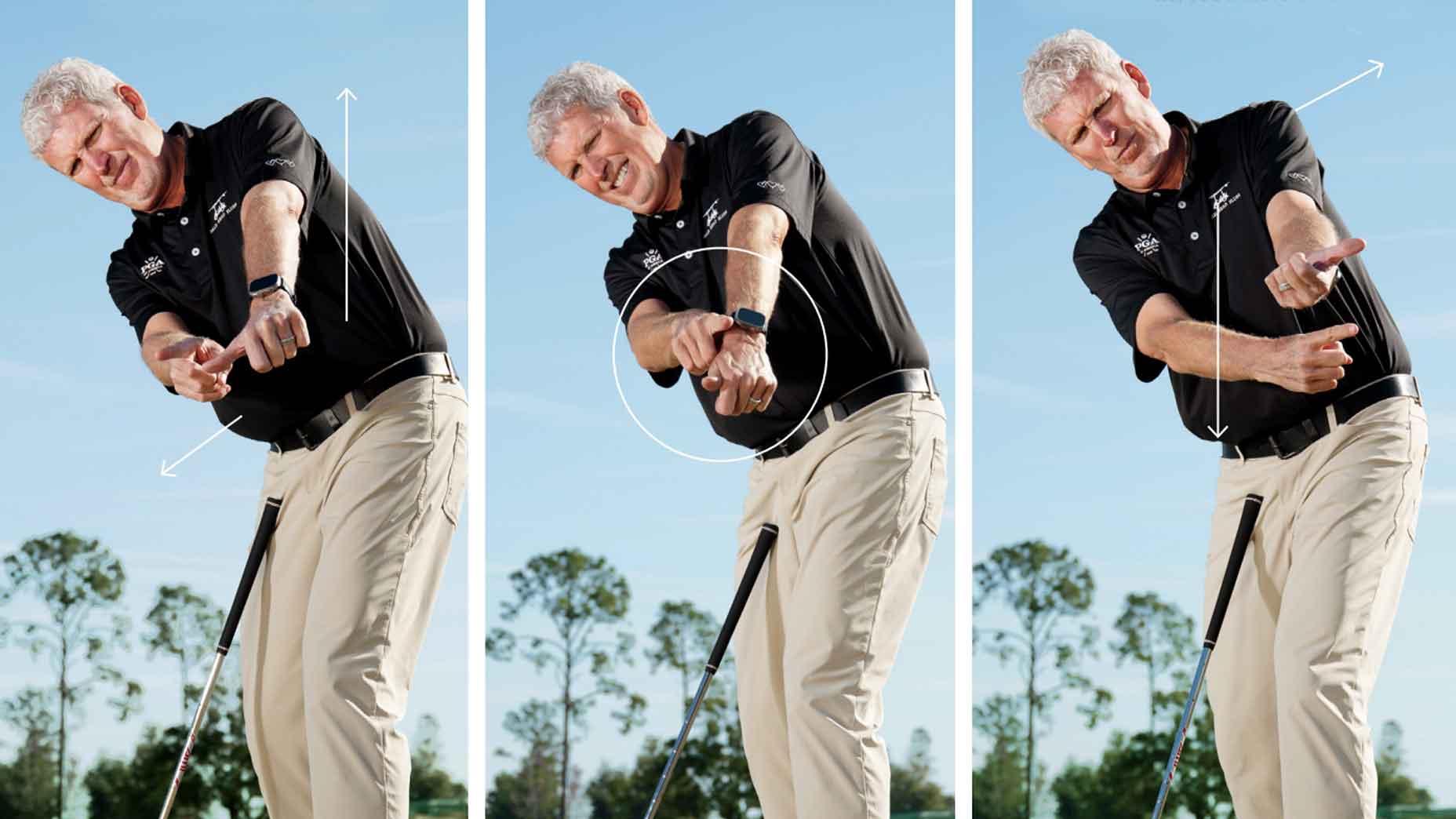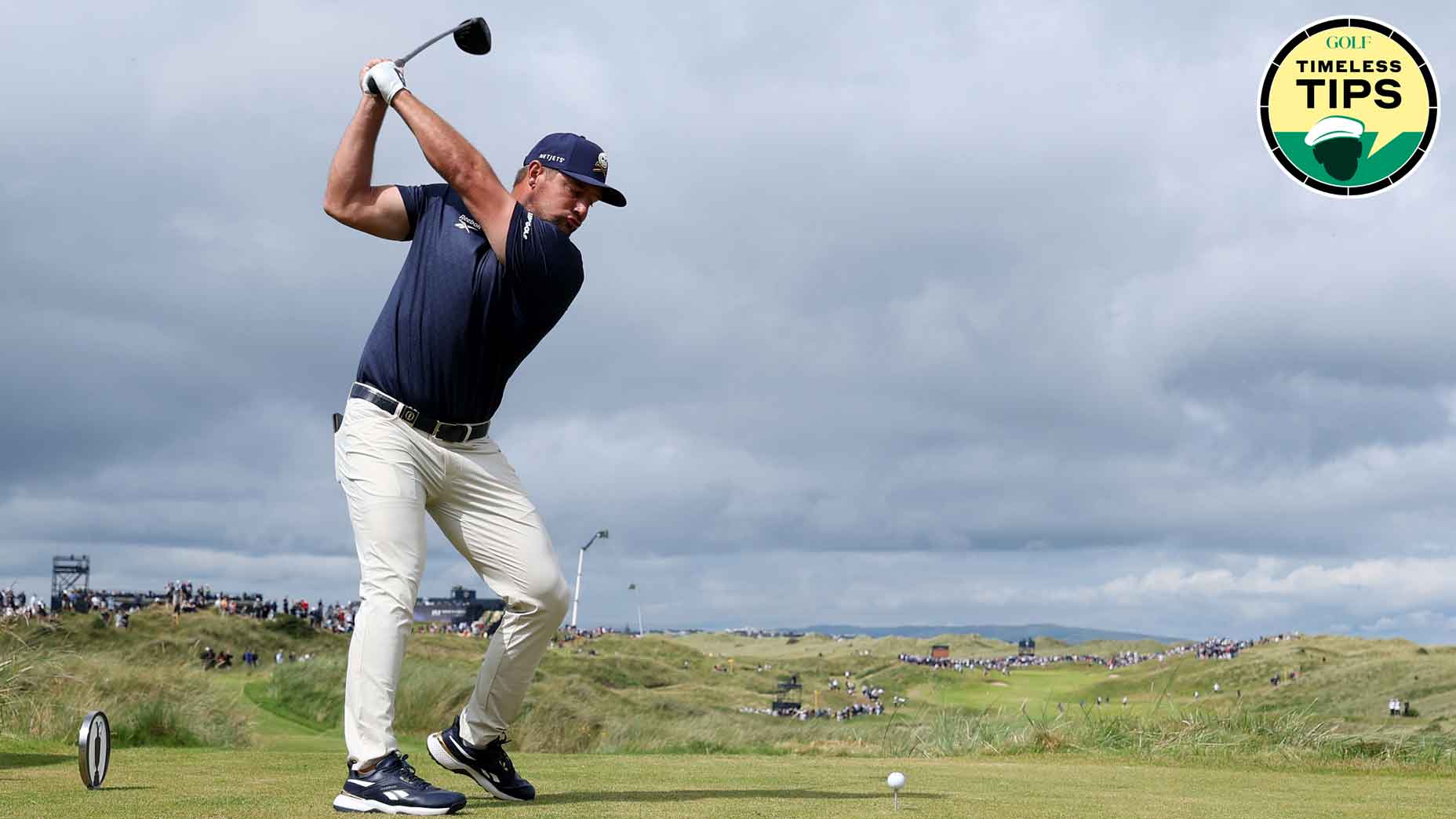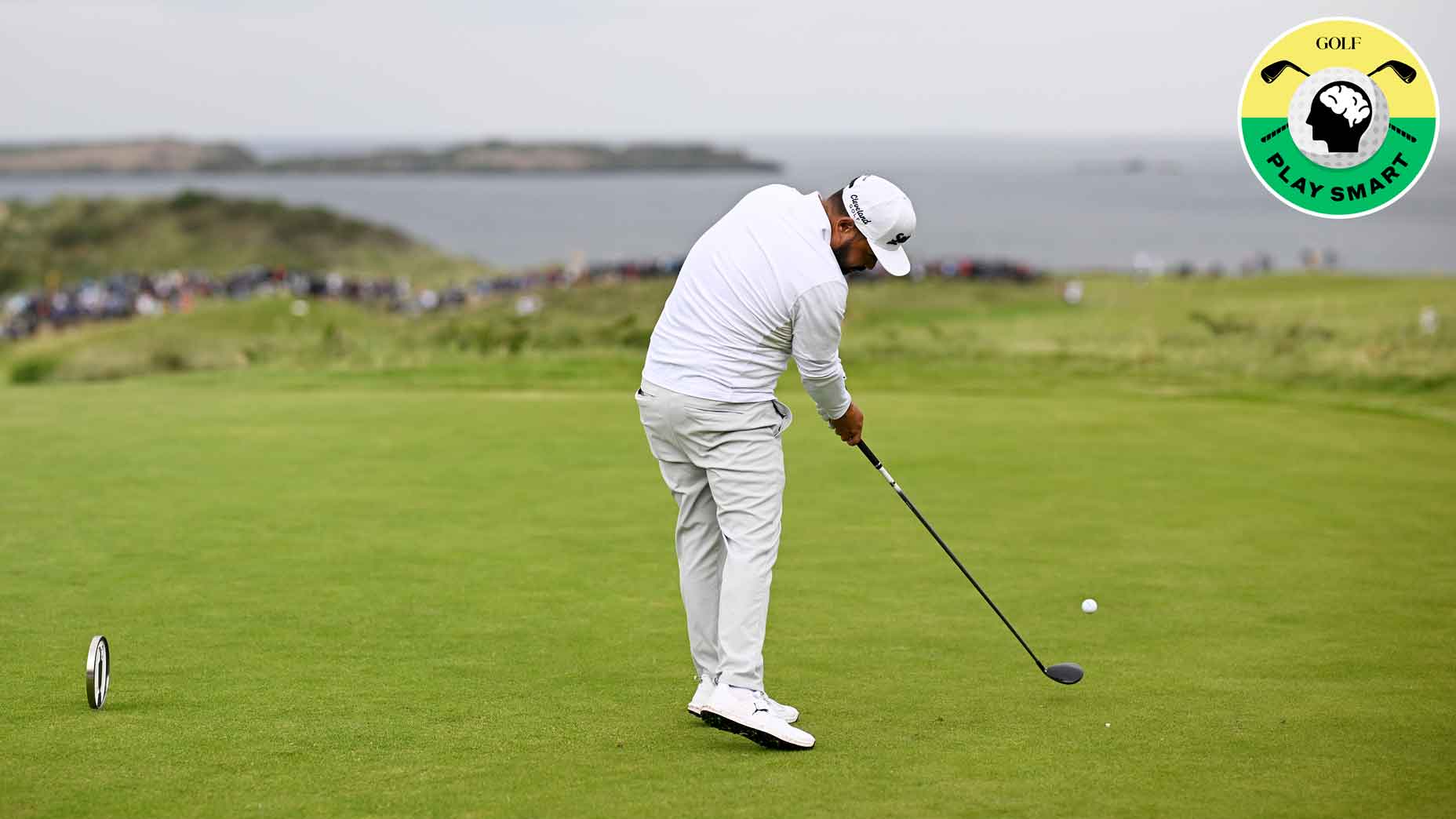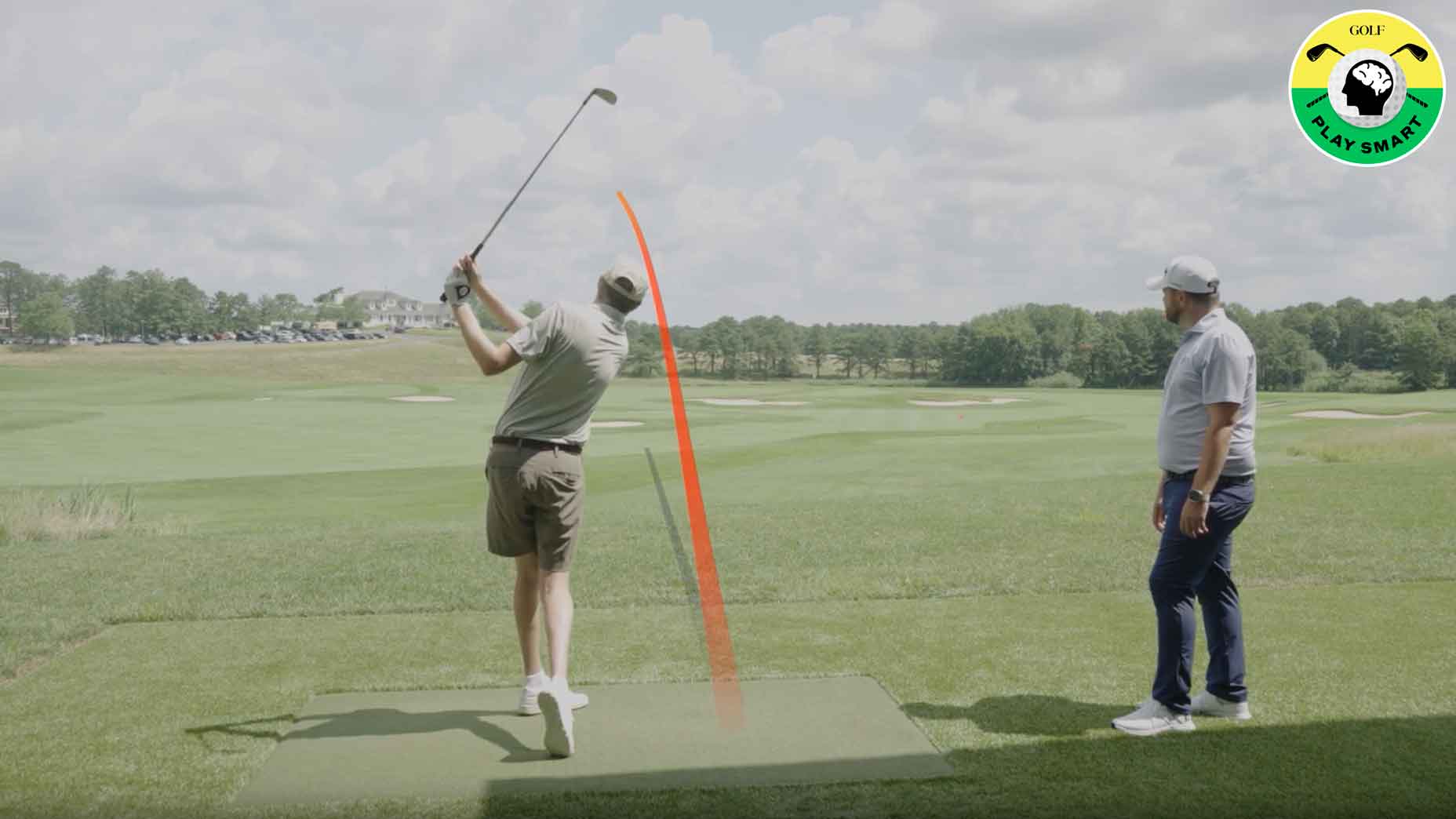Welcome to Play Smart, a regular GOLF.com game-improvement column that will help you play smarter, better golf.
At one point or another, every amateur golfer wants to hit the “hero shot” like some of our favorite pro golfers do. Problem is, most amateurs have nowhere near the skill required to execute such a difficult shot, and they’d be better off taking a drop rather than try to play their ball from an obstructed area.
If you haven’t seen the video below before, it’s a prime example of a decision that many amateurs often face during a round: going for it versus taking a drop.
Now, look, I want to shoot the lowest score possible each time I play golf, but is it really worth risking your teeth to do so? It shouldn’t be.
In today’s Play Smart lesson, GOLF Top 100 Teacher Jim Murphy is here to help make these tough decisions a little bit easier for you. Instead of always defaulting to going for it, he explains the thought process to go through in order to analyze how difficult the shot is — and then making the right golf decision. Check out what he has to say below.
Assessing risk on the golf course
During this year’s U.S. Open, we saw the eventual champion, Wyndham Clark, whiff on a shot.
While hitting his approach on the 14th hole, Clark was just off the edge of the green in very deep grass and barranca. Despite the ball being buried, he went in there with a sand wedge and tried to hit it onto the green.
His first swing never hit the ball.
Rules Guy: Is it legal to avoid losing a ball by taking a penalty off the tee and heading straight to the drop zone?By: Rules Guy
Clark then swung again, popping the ball out and watching it roll to the other side of the green; where he was able to 2-putt for bogey.
In my opinion, he was lucky the ball made it out on the second attempt — otherwise it could have cost him the tournament. This got me thinking about when a player should asses risk, and when taking a drop is better than going for it. Here are three things I look for when assessing when to decide which option is best for you.
Is the club path unobstructed?
If you have an obstructed path to the ball with your club, and your ball has a clear path to landing in a spot better than a drop would produce, then go for it! However, if your club is going to come in contact with branches or heavy grass that can wrap around the shaft, in my opinion, that’s too much risk — so taking a drop is the way to go.
If you can get the club to the ball, but the path to recovery has too many obstacles to overcome — like leaves, limbs, water, or deep grass — the risk is too high, and you should take a drop.
In water, how much of the ball can you see?
If your ball is in the water and it’s shallow (not buried), with more than half of the ball above the water line, go for it! If more than half of your ball is covered by water, or completely underwater, take the drop!
For a ball that is less than half covered, but is plugged in mud, take a drop.
Rely on your history
If you have played the shot before and have had success pulling it off exactly how you planned, then go for it. This includes previous rounds, or times on the range where you work on these difficult shots. However, if you have tried a similar shot before and failed, take a drop! And if you’ve never tried the shot in practice or on the course — and the risk would be greater than one shot added to your scorecard — I suggest taking the drop.
Hitting and hoping is no way to play golf successfully. So the next time you’re faced with a decision to either go for it or take a drop, make sure you’ve done your homework and have assessed the risk of the situation.
Hazy Sticks “The Icon” – Golf Alignment Sticks
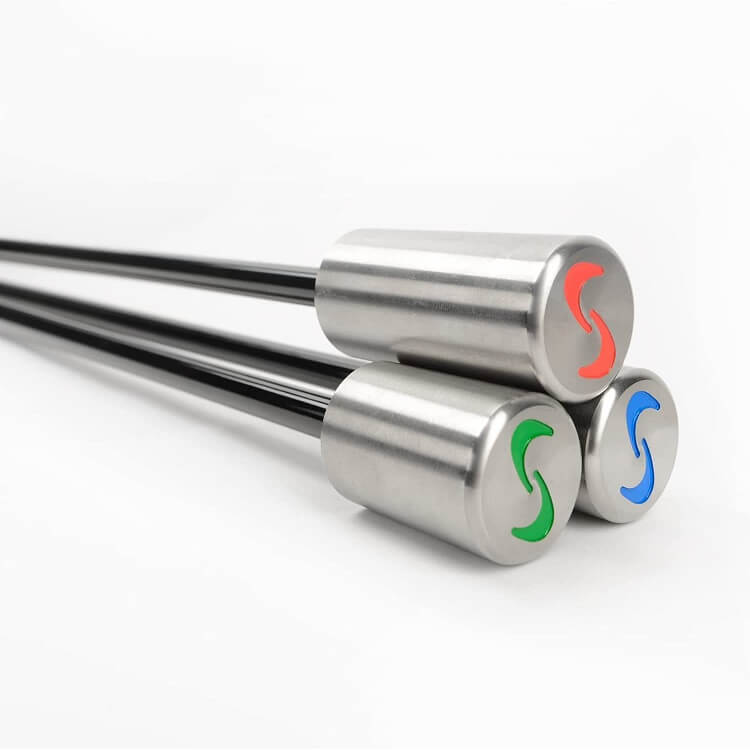
SuperSpeed Golf Training System
Latest In Instruction

Jim Murphy
Golf.com Contributor

Nick Dimengo
Golf.com Editor
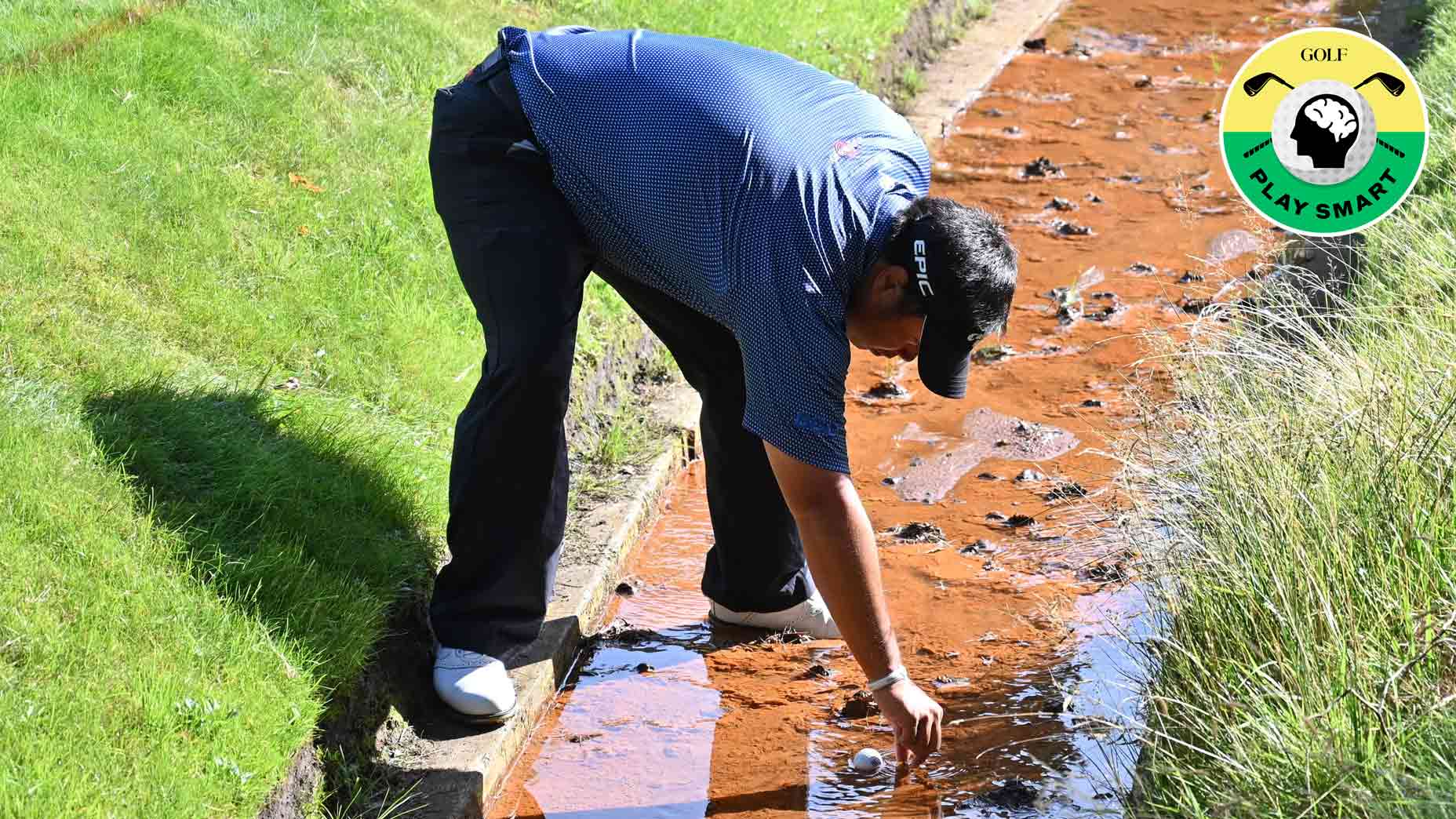
 (@liquorgolf)
(@liquorgolf)
